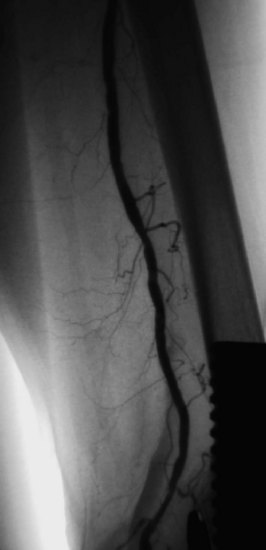Problem 24 Acute leg pain in a 73-year-old man
You are relaxing in a comfortable chair in the doctors’ mess, looking at the clock ticking towards the end of your shift when your thoughts are interrupted by a call from the ward.
The nurse would like you to see a 73-year-old man who is complaining of sudden-onset acute severe pain in his left leg. Two days earlier he had been admitted to hospital with an anterior myocardial infarction.
An investigation is performed. One of the results is shown in Figure 24.1.
The patient underwent thrombolysis of the embolus radiologically using the ‘pulse-spray’ technique that often results in rapid clot lysis. Standard thrombolytic techniques would take 4–20 hours to achieve clot dissolution, and it was thought this patient’s leg was unlikely to be viable if revascularization took this length of time. The ‘pulse-spray’ technique is much more rapid. After 1 hour of urokinase pulsing, the angiogram was repeated (Figures 24.2 and 24.3).
Stay updated, free articles. Join our Telegram channel

Full access? Get Clinical Tree





